Growing Hibiscus in Pots – Care and Tips
It’s no secret that my happy place is on the coast and I’m a beach girl at heart. My beachy vibes run strong and hibiscus is my spirit flower. Where we live in zone 6b, growing hibiscus in pots is the closest thing I can get to my honeymoon memories of Maui.
But I’ll take it!
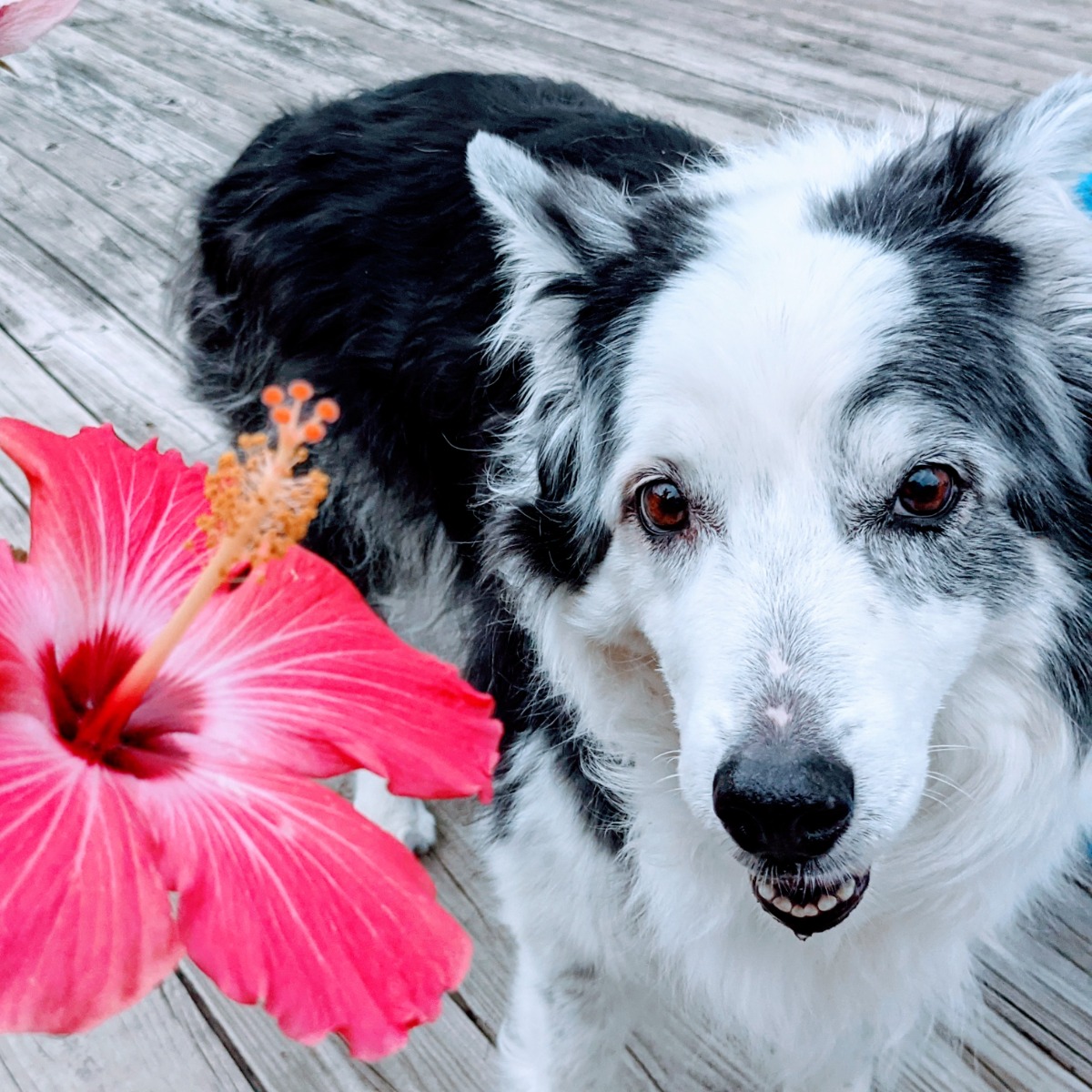
What do hibiscus look like?
Hibiscus flowers are tropical and very showy with five fluttery petals and a long pistil with five round stigma on the ends. A burst of yellow anthers adds a pop of eye-catching color and feathery texture. Hibiscus come in many color combinations, from pink, red, white, orange, yellow, and multicolor blends.
The hibiscus shrubs have woody stems and dark green almost glossy leaves. Flowers bloom for one day and then fall from the plant.
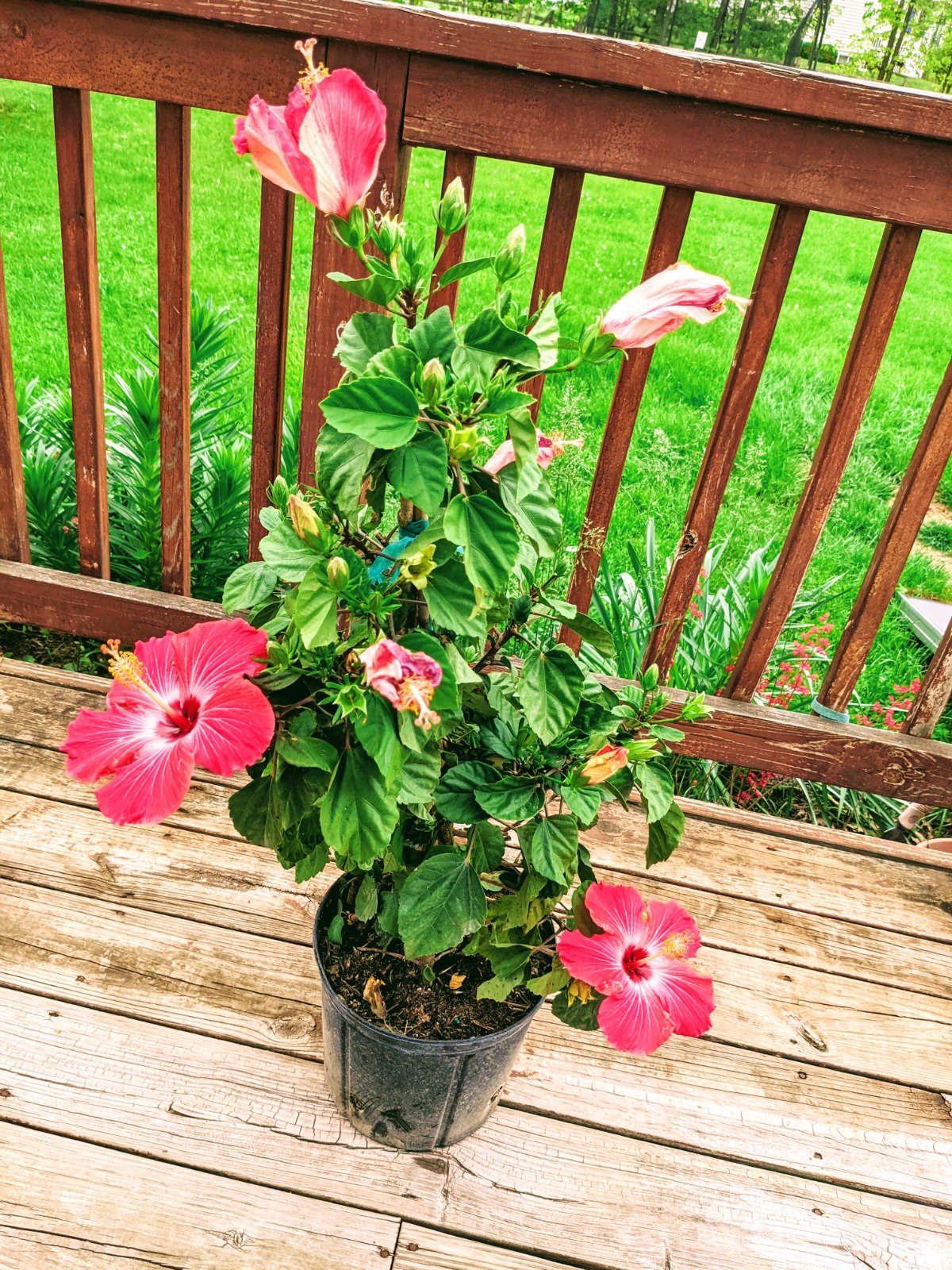
Where to Get Potted Hibiscus Plants
Produce Junction is a great first stop if you want to buy a potted hibiscus. The store in Exton had column hibiscus plants for sale featuring blooms in three different colors!
The pink and orange blossom combination stole my heart!
Of course, you can find countless color combinations and flower styles, depending on where you shop.
I also loved the hibiscus trees and plants for sale at Ott’s Exotic Plants in Schwenksville, PA. They have some of the most beautiful hibiscus plants I’ve seen. I love the double hibiscus in a pretty shade of coral and the sunset colored one!
To continue the list, Giant grocery store also sells potted hibiscus plants. I saw them for about $26 in May.
I am sure you can find them at Lowe’s, Costco, and other big box stores, as well.
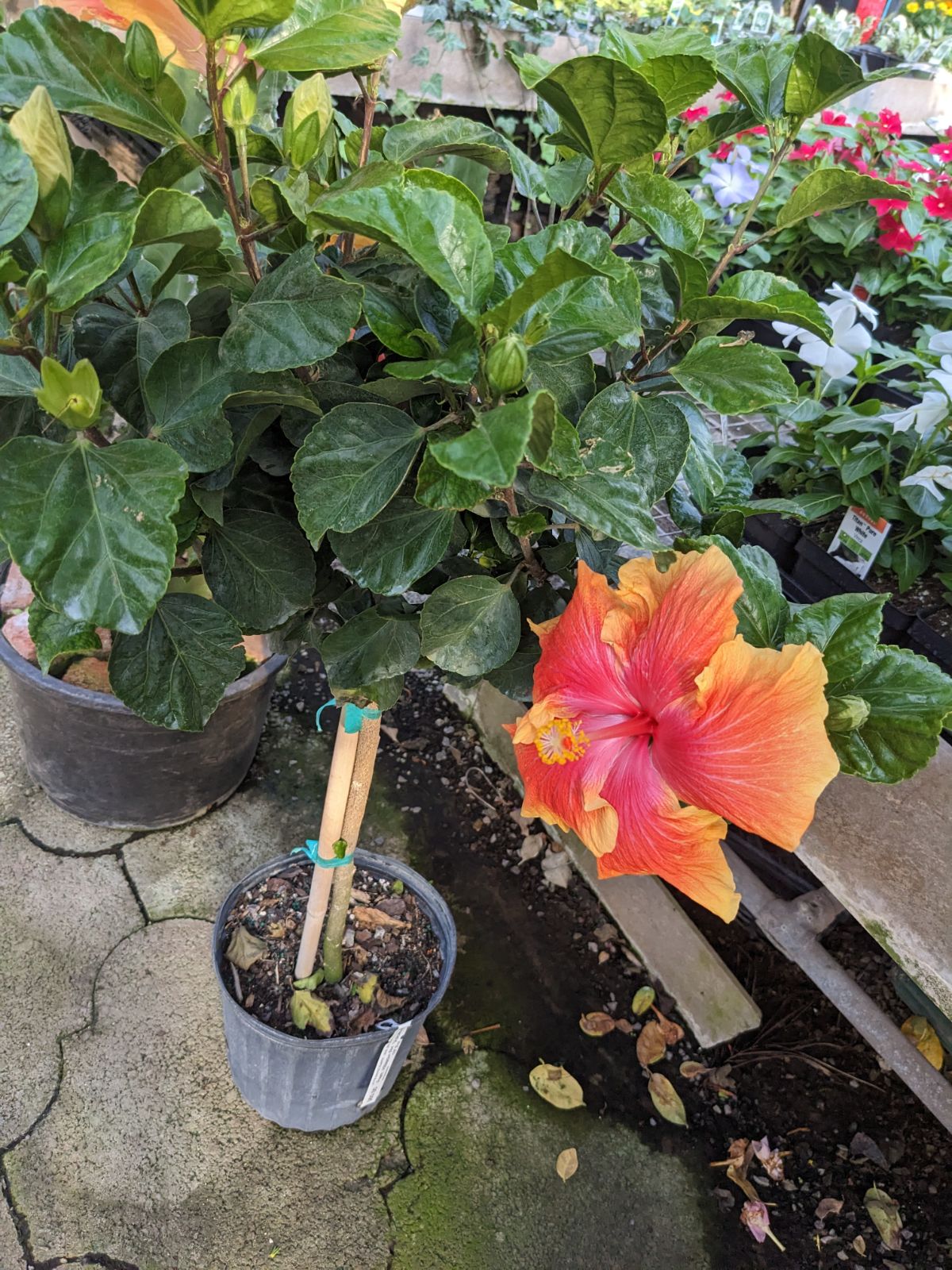
Hibiscus Care in Pots
I figure I’m not the only northeast girl trying to grow a tropical garden, so here are my favorite care tips for hibiscus plants growing in pots.
Choosing Hibiscus Containers
Keep in mind that hibiscus actually like their roots a bit crowded. Choose a container that is a bit bigger than the original pot that came with the plant. When potting up to a larger container, keep increasing by just a bit bigger each time.
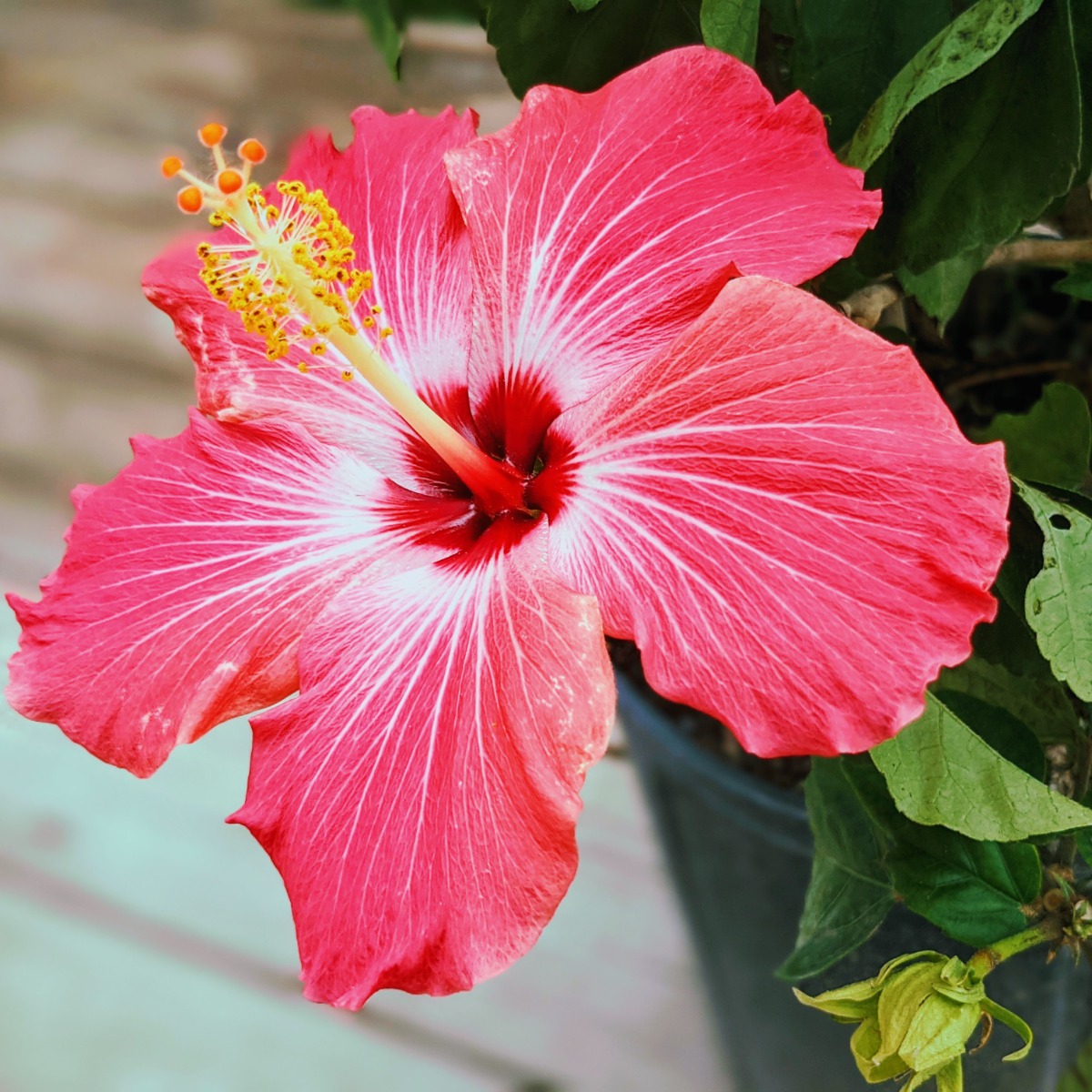
More than anything, make sure your containers have drain holes to avoid standing water. Tropical hibiscus do like moist soil but would not like oversaturated soil.
If you need to move your potted hibiscus indoors from time to time, you will appreciate having a lighter pot that weighs less, such as plastic or the foam type plastic.
If you get a lot of wind in your area, look for a heavier pot like a ceramic planter or large planting urn. Otherwise, any slightly larger decorative pot with drainage holes should do just fine!
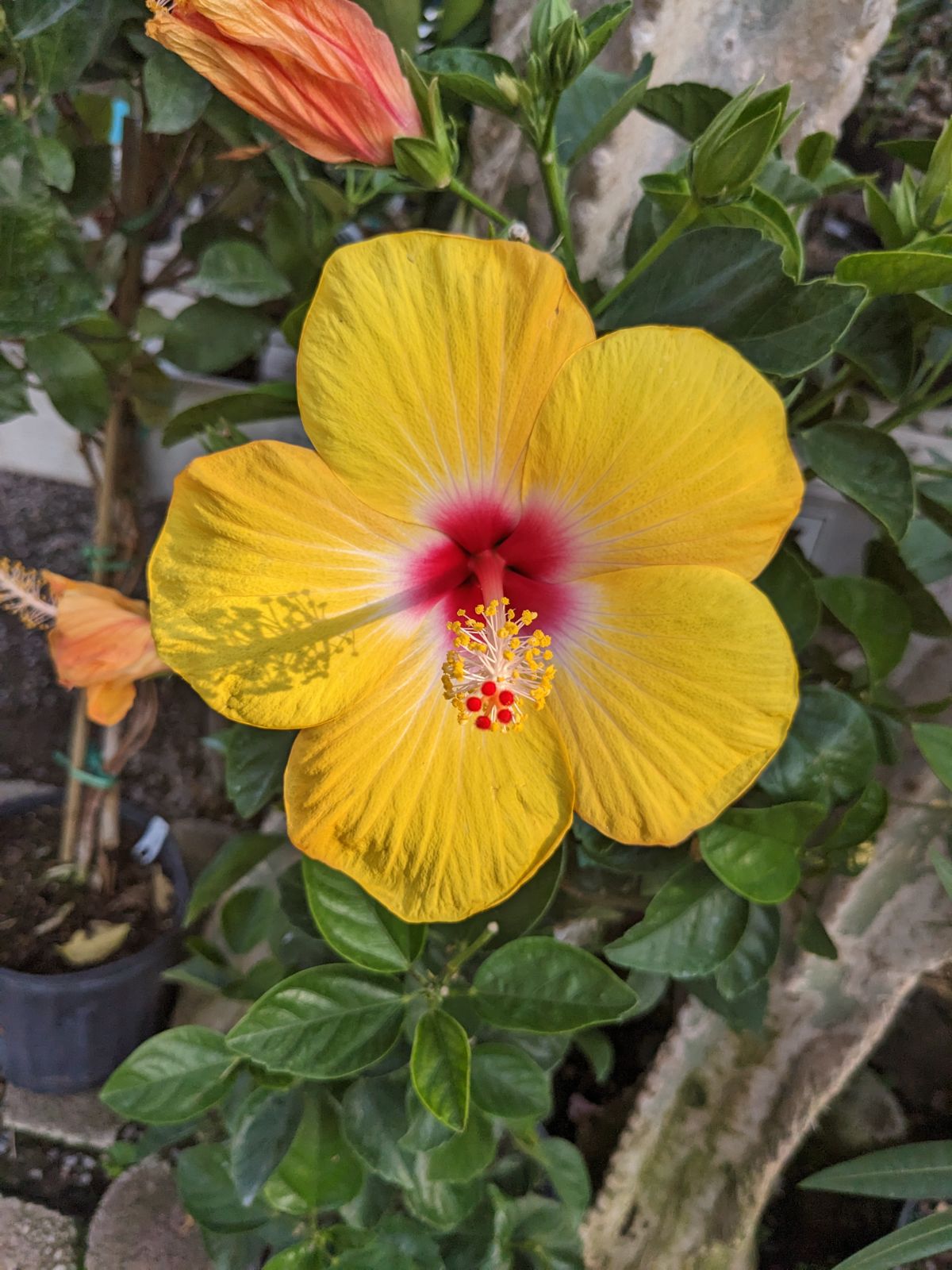
How Often to Water Hibiscus in Pots
Tropical hibiscus plants generally prefer moist soil that isn’t soggy. For hibiscus grown in containers, consider using a moisture meter to help anticipate watering needs. You may need to water hibiscus growing in pots daily, every day, or every two days, depending on outdoor temperatures, rainfall, and how fast the soil dries in between waterings.
Hibiscus plants tend to have high water needs, meaning you should stay on top of checking them daily. Adequate watering helps to reduce stress on the plant and keep hibiscus blooming beautifully.
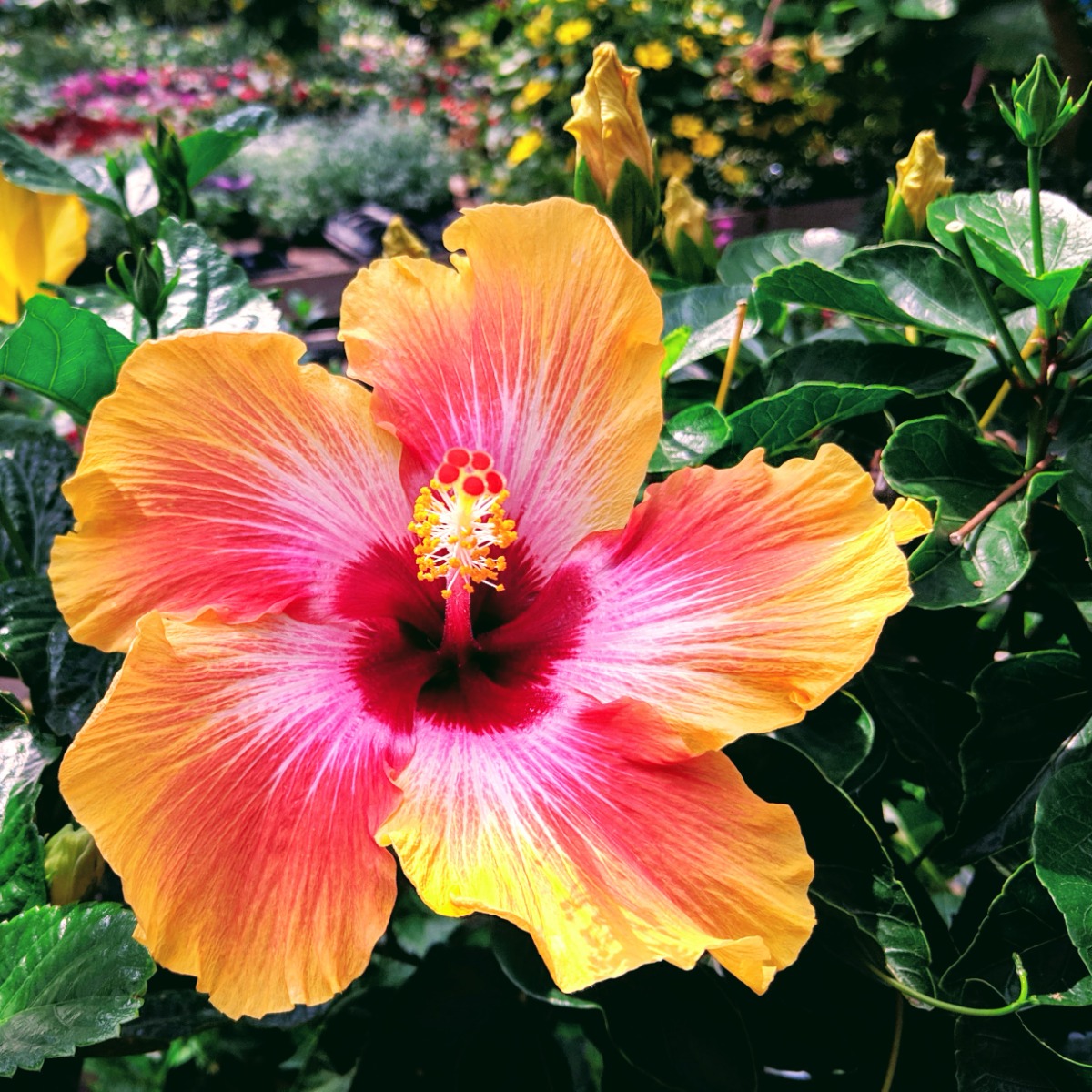
I hope to have one just like this one day. This one was for sale at Ott’s Greenhouse in Schwenksville, PA back in 2019.
When to Fertilize Hibiscus in Containers
Plan to fertilize hibiscus regularly during the main growing season. You can fertilize when you first plant or bring hibiscus home. Then, plan to fertilize on a weekly basis or every other week with a water-in fertilizer. For slow-release fertilizer, reapply about every 8 weeks.
Which fertilizer is best for hibiscus?
You can use a tropical fertilizer like Pennington UltraGreen palm tree and hibiscus fertilizer or a bloom-boosting fertilizer like Miracle Gro Bloom Booster Flower Food.
When considering fertilizers, look for one with the most potassium (K), then nitrogen (N), and finally, not as much phosphorous (P).
That being said, a general liquid fertilizer can still benefit most plants as opposed to not fertilizing at all.
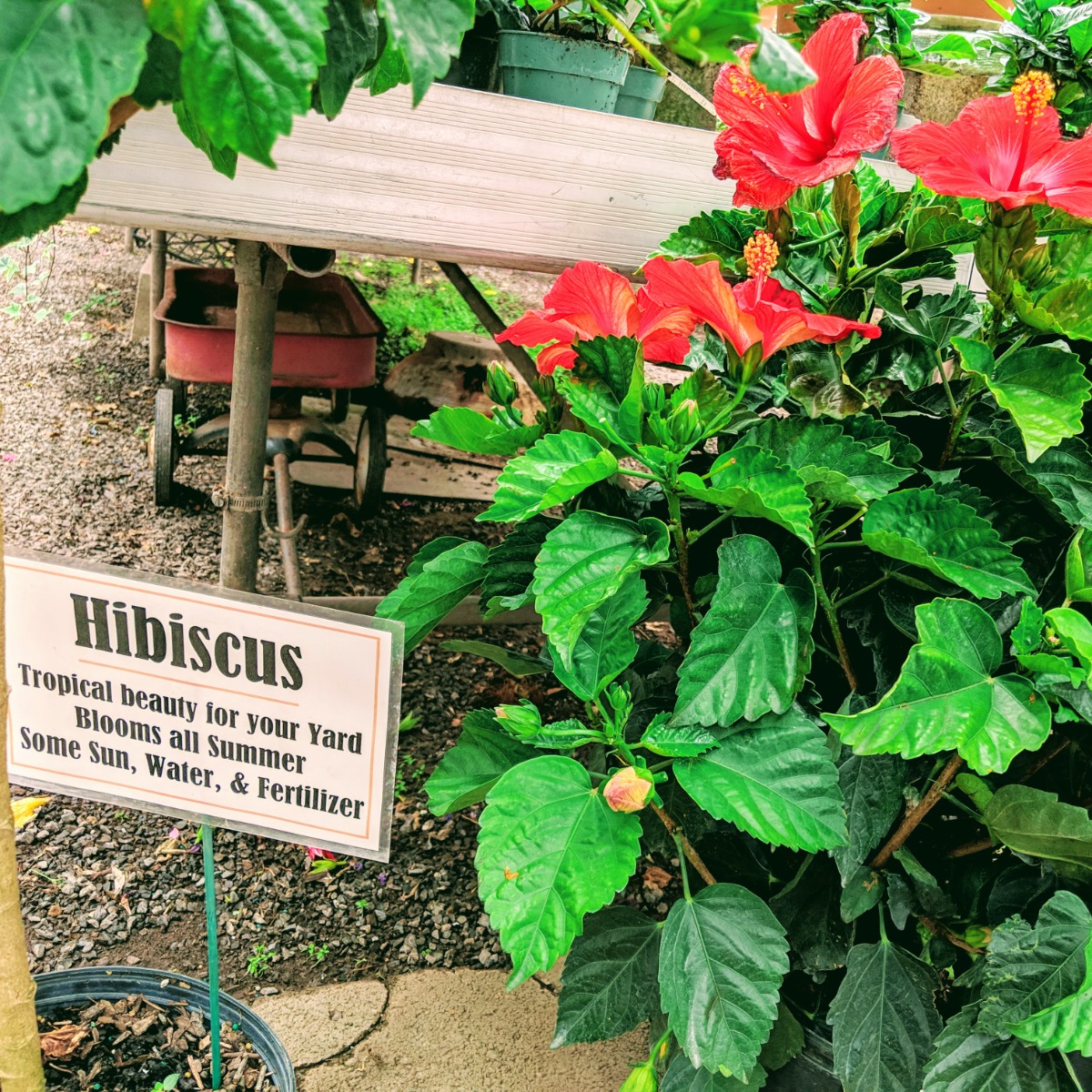
Protecting Hibiscus in Containers
Tropical hibiscus plants cannot withstand temperatures dipping down to 32 degrees. If your climate doesn’t allow for hibiscus tree, plant, or shrub to survive outdoors all year, plan to bring them inside for the winter.
Find a spot by a sunny window and/or supplement lighting requirements with LED grow lights.
FAQ
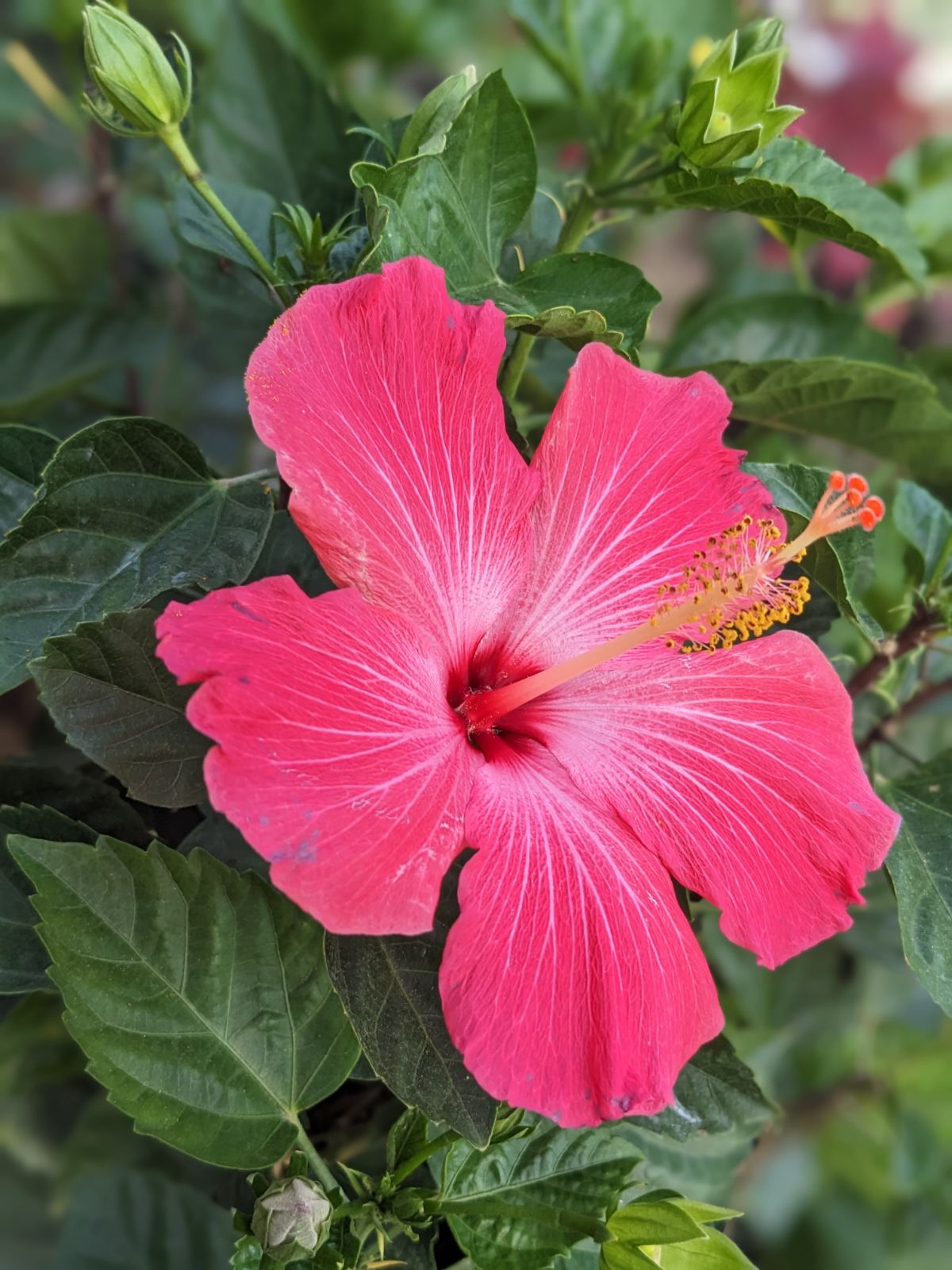
Final Thoughts: Growing Hibiscus in Pots
Hibiscus flowers make me happy! Channeling tropical vibes in my own backyard is awesome with a hibiscus, even here in PA.
I especially love going out and taking photos of my girls with their beautiful faces next to the huge hibiscus blooms.
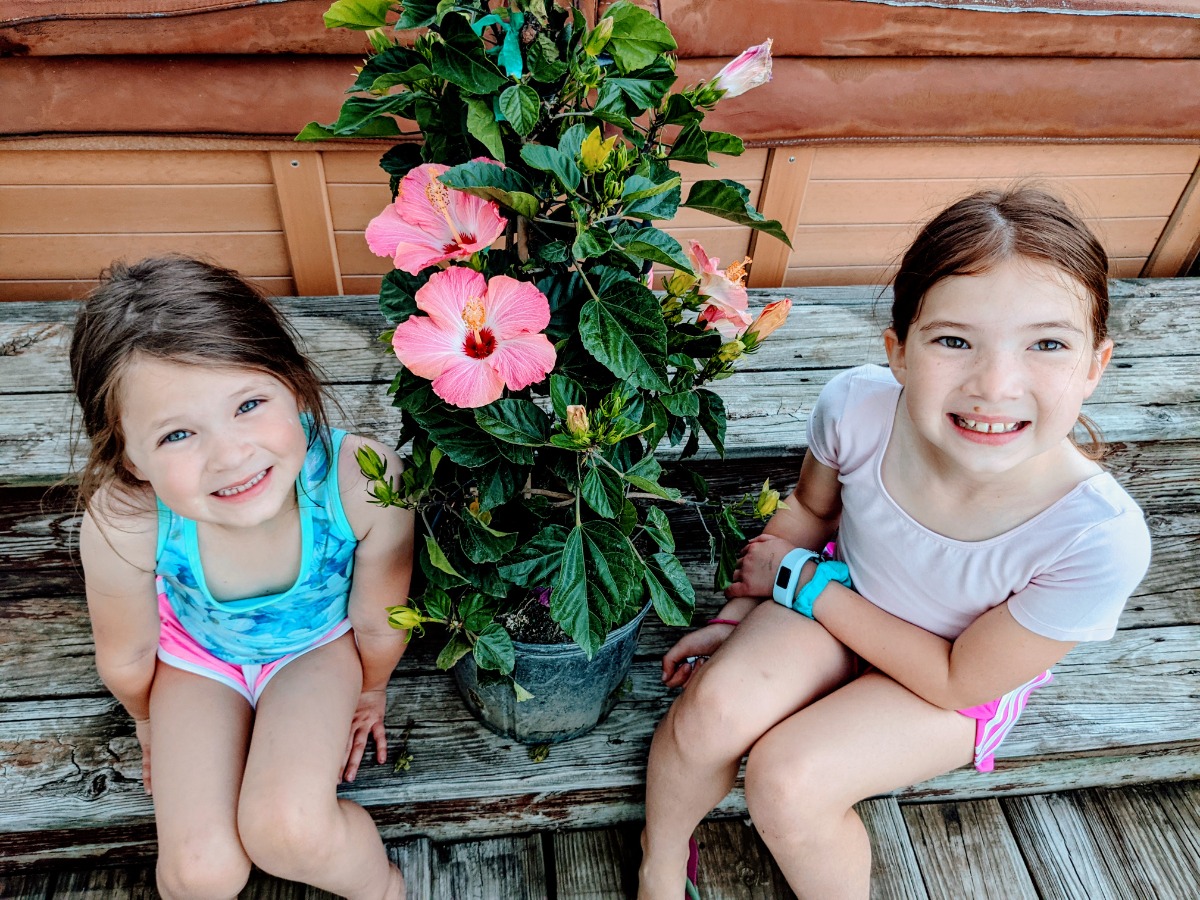
Be sure to stay on top of watering and make sure the soil doesn’t get too dry. It’s okay for it to get a little dry between waterings, but definitely don’t let it dry out too long.
Also, one other tip – if you notice your hibiscus isn’t thriving, you can always try to plant a potted hibiscus in your garden for the season.
If you want to overwinter it, you’ll have to dig it up again, but it could be a good change of pace if the plant isn’t taking off in the pot.
Do you have any other good tips on growing hibiscus in containers? Feel free to share your own hibiscus stories or ask any questions in the comments below!
Happy Gardening!
05.15.23 – Updated to add more photos and update the text. Added FAQ.

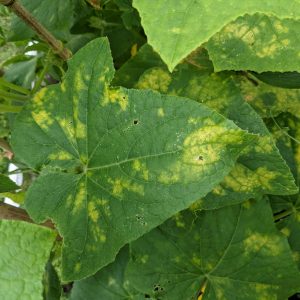
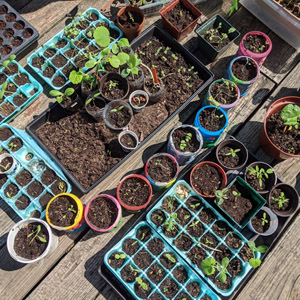
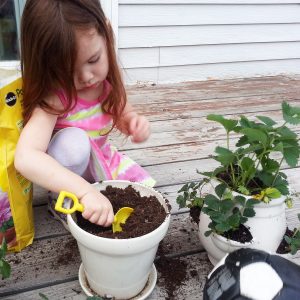
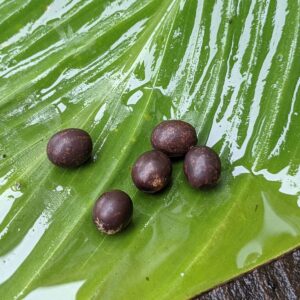
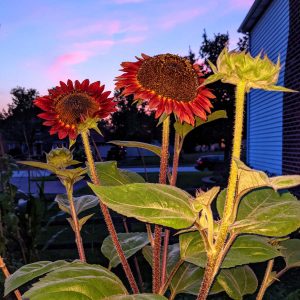

Hello fellow hibiscus lover! I have been told that even though hibiscus are tropical they do not like a lot of water. Typically yellow leaves on a plant indicate too much water…BUT, tricky hibiscus leaves will turn yellow with too much/little water. When I repotted my Hawaiian Sunset tree it went into shock or stress, not sure which – maybe both, and at least 1/2 the leaves turned yellow. I pinched them off and new green has started budding. But, it looks almost bald. I am not sure what to do with it. I usually wait until the soil is dry before I water. I live in southwestern Ohio so it’s very humid here, which they love. This is my 3rd Hawaiian Sunset so we shall see. Wish I had a way of sending you pics of previous blooms. They are gorgeous.
Hi Victoria, lovely to hear from you and share a love of this beautiful flower! Your Hawaiian sunset sounds incredibly gorgeous- you can feel free to email me some photos as I would love to see them. If you would like them published on the article, I would be happy to do that with proper credit to you! It is so hard to tell with the yellowing leaves – I run into the same trouble – is it too much water or not enough. Plus our rain has been very random, either too much or none at all. I will be interested in seeing what happens. Lately I’ve seen a chipmunk climbing in my hibiscus! Wishing you a wonderful growing season!